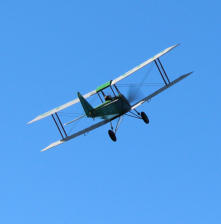
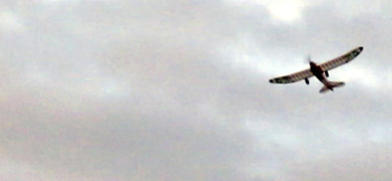
New Projects are added to the top of this list…
Desoutter 3-seater monoplane

If you look further down these pages you will see that some
years ago I built a 42" (107cm) span Desoutter Mk I from a
Tim Hooper plan.
This was a wonderfully sedate and steady flyer—the Desoutter
has great proportions for a model. The only thing that bothered
me about it was that it was built to a different scale than all the
models that I have designed myself.
So, with apologies to Tim Hooper, I havebuilt another one, this
time to a scale of one inch to the foot (1:12) and as I don't like
to repeat myself I built a model of the prototype this time,
which differed in a number of respects from the production
version.
the most obvious difference is that odd T-tail that was dropped
in the final version, which also had a narrower engine cowling
to improve the view forward and a narrower track
undercarriage.
The new model has a span of 35" (89cm) and weighs 10.7oz
(297g)
The production Desoutter which came out in 1929 was
designed as an air taxi with a pilot in front and seats for two
side by side behind. It was quite widely used in the early
thirties and had a reputation for reliability. A number of
remarkable long-distance flights were made in them and one is
still flying at the Shuttleworth Trust

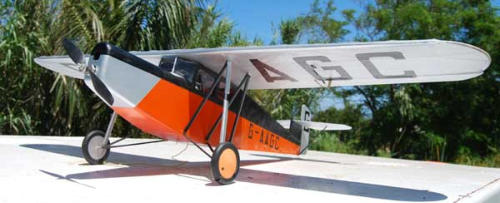
Flying Eye
This is basically my Alvéola design (see below) scaled up to 4'
(122cm) wingspan to use as a dedicated camera-carrier
The camera can be seen in the flying shot, mounted in a turret
under the fuselage.
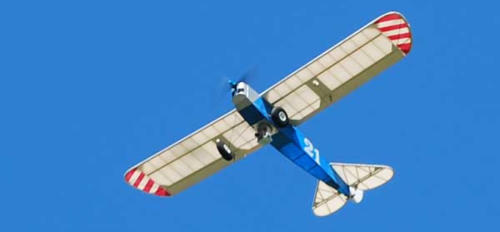
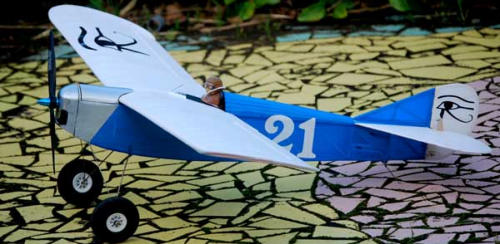

This is the sort of picture it takes:
New Ridge Runt
A 50" (127cm) wingspan slope-soarer.
This is the Mk II version of the original Ridge Runt mentioned
near the bottom of the page.
The original, built from a Hobby Lobby kit, was the model with
which I taught myself to fly radio control
As a trainer it became so battered that it finally had to be
abandoned and now I have built myself a new one from the
plans.
The only ways in which it differs from the original is that it has
a transparent cockpit cover instead of the original balsa one and
it has separate aileron servos so that I can set them up as
flapperons.
The new cockpit cover was made from a plastic pop bottle heat-
shrunk over a wooden mould.
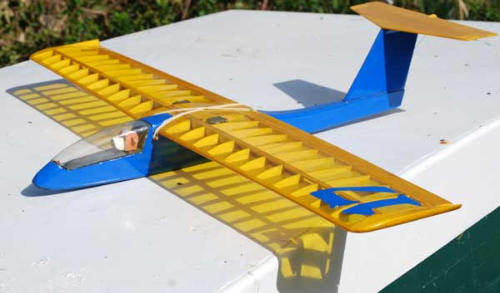
Comper Swift
At 24" wingspan, this is my smallest radio controlled model to date.
The full sized Comper Swift was a single seater racer from the
1930's that was built with everything from a 40hp ABC Scorpion
twin to a 120hp De Havilland Gypsy Major engine.
My model is of the latter version. The plans were from a 1950's 18
inch Veron rubber model by Phil Smith scaled up to 24 inch span, or
1/12th scale and adapted for electic drive.. Coverering was an
experiment—tissue pre-printed in an inkjet printer.
you can see the build log HERE
Unfortunately the model was severly damaged in a handling
accident before it was even test flown and has been put aside
pending major repairs.
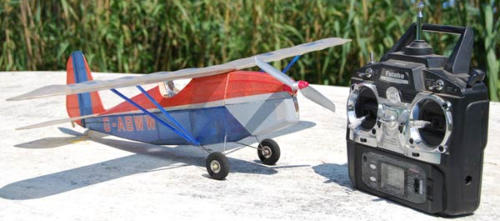
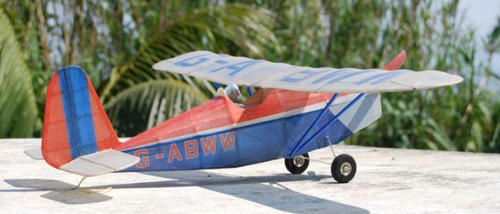
part of the village of Cascalho on the island of Faial, with
Aldina's Supermarket and Café near the centre of the picture
with a white roof
Percival Gull Six




A 1/12th scale (36¼ inch span) model of the plane in which
Jean Batten made a number of record-breaking long-distance
flights in the 1930's.
The original Gull Six was a three seater, but Batten replaced the
back seats with a huge fuel tank for her record flights.
Scratch built for a contest on RC Groups, the build-log is HERE.
The model came to an unfortunate end when it shed a propeller
blade in flight and the consequent vibration shook the nose
apart.
Rather than repair it, I redrew the plans incorporating all the
improvements that occurred to me during the building
So far I have not built a Mk2.
SPECS:
Span: 36¼ in (92cm)
Length: 25in (63.5cm)
Wing area: 1.06 sq.ft (985 sq.cm)
Weight: 11.75 oz (333g)
Wing loading: 11.08 oz/sq.ft
Motor: 24g 1700kVa outrunner
Battery: 800mAh 2 cell lipo
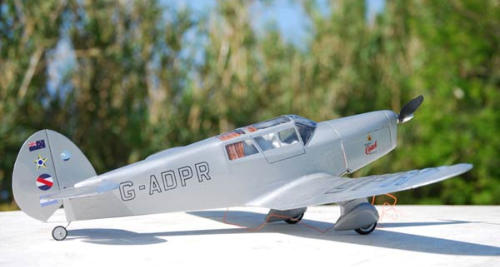
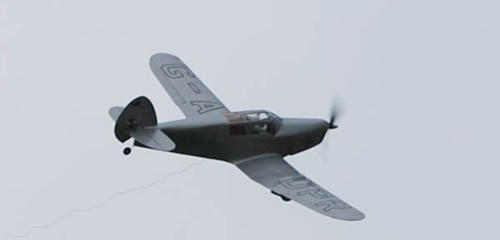

Short S-16 Scion
This model was built to participate in an informal competition organized by
an on-line model aircraft forum. The requirement was to design, build and
fly a scale model of any multi engined aircraft (that had actually flown).
Wingspan of model could not exceed 100" and there was a 6 month time
limit.
The full-sized Scion first flew in 1934. It carried a pilot and up to five
passengers and was powered by two 90hp Pobjoy Niagara geared radials.
Short's built 16, but wanted to concentrate their resources on big flying
boats so sold the design to Pobjoy's who built another 6. Several were
impressed into the RAF so there is scope for a military scheme and one
soldiered on in Australia into the 60's.
Some years ago I did preliminary sketches for a 60 inch span version when
I was looking for something with a boxy fuselage to carry cameras,
parachutists etc., however I never pursued the project. For this attempt I
drew it at 1/12 scale for IPS or two small outrunners with a span of 42 in
and, like the full size, it was to be a slow-flying lightweight.
You can see my build-log by clicking HERE.
Model construction is completely conventional: balsa frame with a little
lite-ply and ply and it is covered in litespan. On the first flight it crashed
due to an engine failure (faulty wiring on my part)
but damage was minimal and it has flown
beautifully ever since.
Specs:
Span 42 in, (107) cm
Motors: 2 x hexTronik 24gram Brushless
Outrunner 1700kv
Props: 2 x 7”x5” slow fly
ESC: 2 x TowerPro 9g w12A Brushless Speed
Controller
Battery: 7.4V 1200 mAh lipo
Power: 50 W (8.5 A) at full throttle.
Thrust: 16 oz, 454 gm
Receiver: Jeti REX 5
4 x 8 gm servos
Weight, ready to fly: 18.6 oz, 527 gm
Wing area: 254 sq in, 0.164 sq m
Wing loading: 10.7 oz/sq ft
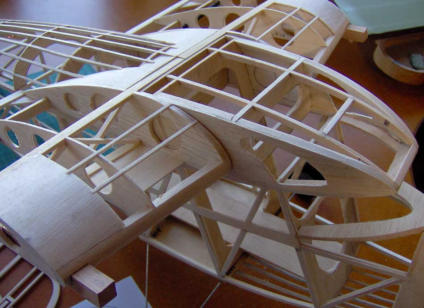
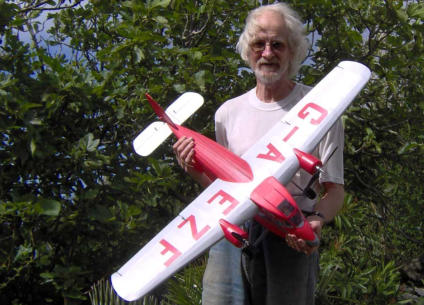
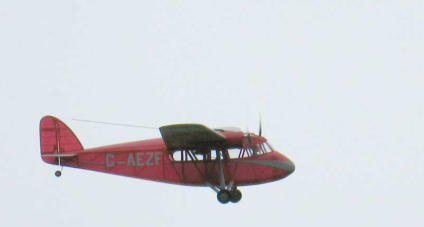


Nicolas-Claude NC-2
This was a French ultra-light from the thirties with a
highly unusual canard layout.
My drawing was basically a peanut plan blown up to 27
inch wingspan. It has a fixed canard and elevons and a
an IPS drive.
I finished it some time ago, but am still fiddling with it
from time to time trying to get it to fly decently. The
canard angle seems quite critical as it is so short-
coupled that the smallest adjustment has a large effect.
So far I have it flying reasonably well in the vertical
plane, but I have almost no directional control. I think I
am going to have to break down and make the rudder
practical.
In the flying shot the pilot has been removed as we thought
he might be blanketing the fin.
This is still a work in progress.
The build log is at HERE
Specs:
GWS IPS drive with 8x6 slow fly prop
750mAh 2s Lipo
Wingspan 27¼ in (69.2cm)
Length 16 7/8th in (42.9cm)
Wing area 121 sq in (781 sq cm)
Canard area 33 sq in (213 sq cm)
Total 154 sq in (994 sq cm)
AU Weight 7.23 oz (205g)
Wing loading 6.8 oz sq ft


Alvéola Mk II
This is a development of the Alvéola shown below. I
designed a new eliptical wing with less dihedral and with
ailerons to make it a little sportier. The rest of the plane is
identical.
It is certainly a different plane to fly—more exciting but less
relaxing. It changed from being “assisted free-flight” to a
plane that had to be “flown” constantly. I finally totalled it
when I pulled when I should have pushed during an inverted
pass. Something I could not have done with the Mark I. I
think I shall build another, but it will be a Mark I; more
suited to my ageing reflexes!
Differences from the MkI include:
Wing area 130 sq in
Weight 8.25 oz (233g)
Wing Loading 9.17 oz sq ft
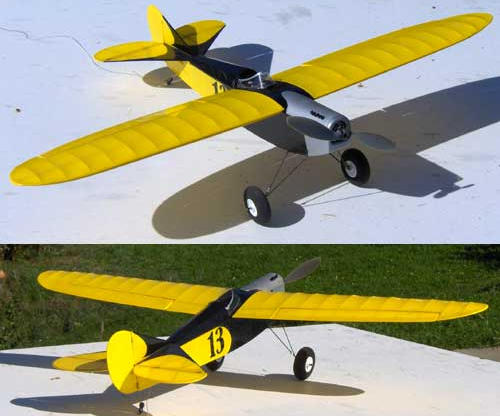
Fleet Model 80 Canuck

This model was built to participate in an informal
competition organized by an on-line model aircraft
forum. The requirement was to design, build and fly a
scale model of any single engined aircraft (that had
actually flown). Wingspan of model could not exceed 60"
and there was a 4 month time limit.
I chose the Fleet Canuck, a Canadian two seat light plane
built in the 40's. The model is to 1/12th scale, giving it a
wingspan of 34". She is powered by a Komodo 257
outrunner and 800 mAh lipo battery. Weight ready to fly
is 8 oz (225 gm) and with a wing area of 155 sq in gives a
wing loading of 7.4 oz/sq ft. At such a light weight she is
strictly a fine-weather flyer, but she tootles around most
realistically.
You can see my build-log by clicking HERE.
I chose the Fleet Canuck for my project for largely
nostalgic reasons. It is a little known aircraft outside
Canada, but a generation of students in the 50's and 60's
learned to fly on this plane—this is a model of the aircraft
in which I did my first solo, CF-DPI, I took my flight test
on her sister, CF-DPX, in 1959.
When most flying students in the US or Britain were
talking over their shoulders to their instructors or
looking at the backs of their necks, in the Canuck we
were sitting comfortably side-by-side—unusual for the
period.
The Canuck had an 85 HP Continental engine and
cruised at over 90 mph. It was very ruggedly built with
bush operations in mind (In fact it was stressed to an
unusually high g number—I don't remember the actual
figure. It remains the only plane I have ever looped, but
don't tell my instructor—we were young and reckless
then!)
The Canuck first flew in 1945, but with many surplus
military light aircraft coming on the market Fleet got
into financial difficulties and production ceased in 1947.
Only 225 were built, but it is a tribute to the Canuck's
quality that, 60 years later, over 70 remain on the books
in Canada and, I believe, one each in England and Brazil.
It could be rapidly switched between wheels, floats and
skis and came from the factory in any colour as long as it
was yellow and blue!
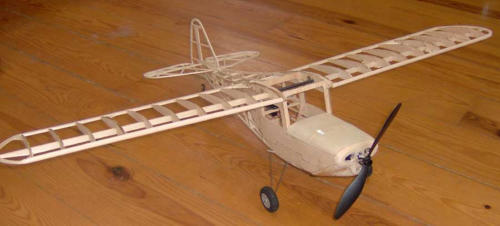
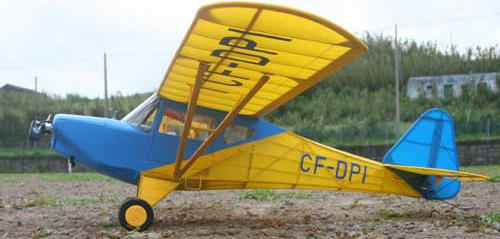
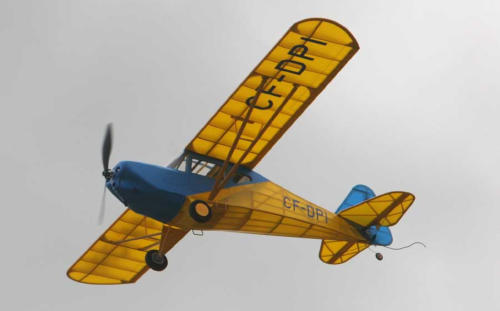

Desoutter Mk I
Another model built from a free plan that came in a magazine,
this time designed by Tim Hooper. Wingspan is 42", powered
by a low-cost bell outrunner and a 1200 mAh 2 cell lipo battery.
It weighs 16 oz (454 gm) ready to fly and with a wing area of
223 sq in it has a wing loading of 10.3 oz/sq ft. Control is
rudder-elevator-aileron-ESC. Performance can best be
described as 'stately' as she performs wide, scale-like turns into
the circuit and trundles by in a low slow pass. She is one of my
favourites for a still summer day
The full sized aircraft was was
designed by Frederick Koolhoven
in Holland and built under licence
by Desoutter in England. Widely
used in the late 20's and 30's as a
light transport/air taxi, one has
been preserved in flying condition
by the Shuttleworth Trust. The
plane has good proportions for a
model and many have been built,
though almost invariably in the
black and orange livery of the
Shuttleworth example. Just to be
different I did mine in the blue
and silver of Imperial Airways who
operated one for a time as an air
taxi.
The full-sized aircraft was a three
seater with a span of 36'. Engine
was a Cirrus Hermes of 105 hp and
cruising speed was 97 mph. One distinctive peculiarity was the
very long-travel undercarriage.
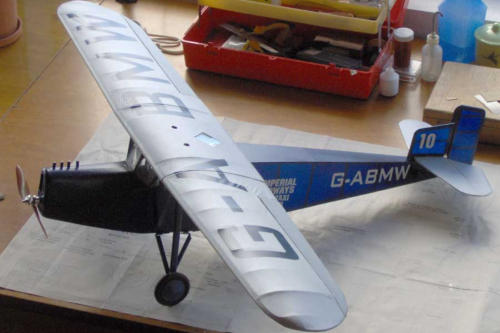
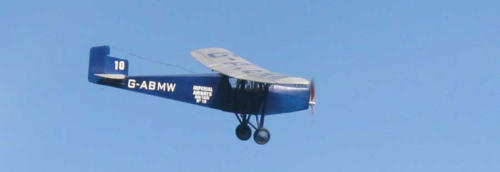
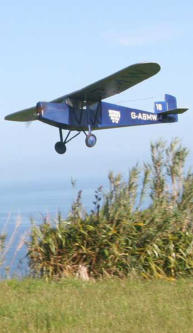

Alvéola Mk I
The next plane is one I built to match a motor. I bought my
first brushless outrunner motor in kit form, and after I had
built it I realised I didn't have a suitable aircraft to fly it so I
designed one.
It is a simple balsa framed, tissue covered model with a
wingspan of 32½ inches (82.6cm) and ready to fly with an
800mAh LiPo battery it weighs 8oz (228 grams)
The design worked out very well and flies beautifully, just
had to tape a 2 cent coin to the tail to balance it! The large
wheels cope well with the local football field. It will take off
most realistically at half-throttle and cruise at one third. I
am really pleased at how well it has turned out—it has put in
more flying hours than any of my planes this past summer.
The name, Alvéola, is Portuguese for the grey wagtail, a
common bird in these parts, and also describes my flying
style. I am now working on plans for an alternate aileron-
equipped wing that would make it fully aerobatic.
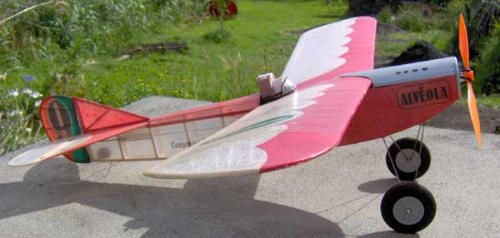

Morane Saulnier Type L
This is a 30" (75 cm) span model of a Morane-
Saulnier type L from a Peter Rake plan.
It is electric powered with a GWS IPS motor
running on an 800 mAh Lipo battery, giving a
flight time of 20+ minutes. Covering is tissue
over mylar, and the markings are coloured
tissue. All-up weight, ready to fly, is 6.25 oz
(179 gm) wing area is 145 sq in, so wing
loading is close to 6¼ oz/sq ft. It was
completed in the spring of 2005
The original Type L was built as a two-seat
scout in the early days of the first world war.
Some were fitted with steel bullet deflectors
bolted to the propellor so that a cowl-mounted
Hotchkiss machine gun could fire straight
forwards without shooting off the propellor
blades. It must have been a pretty good
aircraft for its time as the Germans copied it
and it served in a number of the allied air
forces.
The full-sized aircraft had a span of 36' 9" and
an 80 hp Gnome rotary engine propelled it at
a top speed of 72 mph.
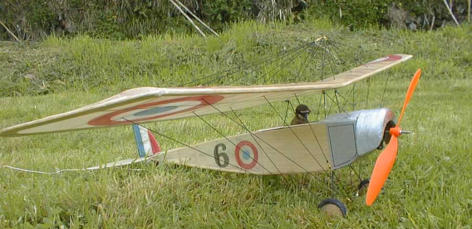
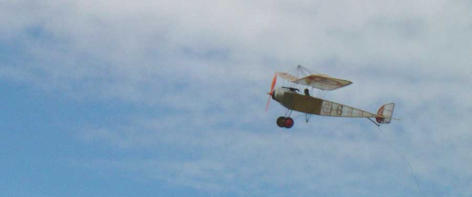
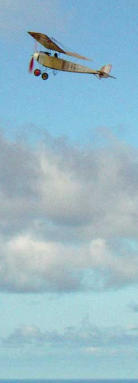

Thermal Bug
The Thermal Bug is a rubber-powered contest model of 28"
wingspan. It was built from plans that I scaled up from an
article in the 1952 Aeromodeller Annual. To see the original
article in pdf format click here; to see my full-size plan also
in pdf format click here. A beautiful floater, it goes up and
never seems to want to come down. All up weight is 4oz
(113g)
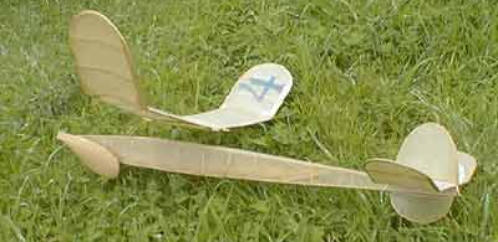

This is a Spectra built from a Great Planes kit and here being
guarded by Maxi the Dog. The wingspan is 78½".
It was originally a powered glider with a Goldfire 550 electric
motor on 7 x 1400 mAh Nicads, however I found I was using it
mainly on the slope and rarely using the motor so I removed
the power train to make it a light-weather soarer. (That's the
Spectra flying in the picture at the bottom of the Aeroplane
page). As you can see below, Maxi flies the plane too!
Great Planes Spectra
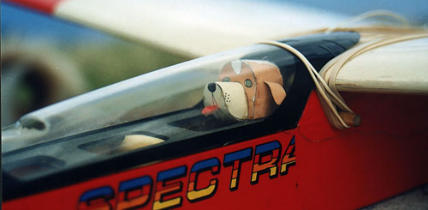
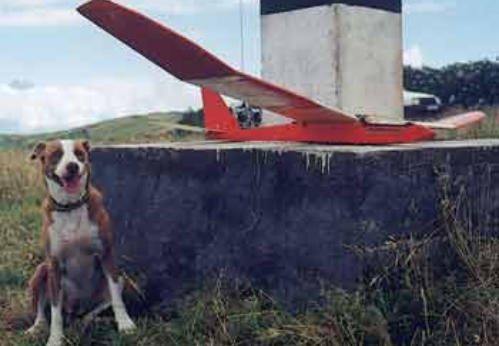

Ridge Runt and Playboy
These are the first models I built when I got back into
the hobby after a 40 year break. The smaller plane is a
20" wingspan Playboy from a KielKraft kit. I built my
first one of these about 56 years ago so when I found
the kit was still available (in the late 90's) I just had to
try another. The larger plane is a Ridge Runt of 50"
wingspan from a Hobby Shack kit. A great slope-
soarer, this is the plane on which I taught myself radio
control. As a training aircraft it became pretty
battered, but I plan to build myself a Mark II
sometime.
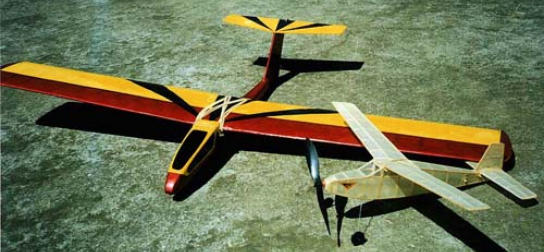
[top] [aeroplane page] [home]
Alvéola Mk IV
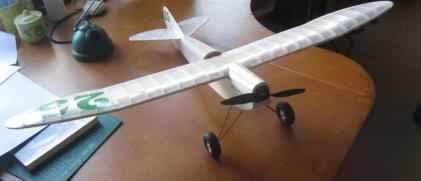
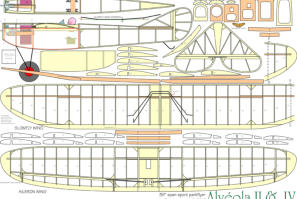
This latest iteration of the Alvéola design has an elegant polydihedral wing
with elliptical tips.
(The Mk I and Mk II versions are further down this page)
Click on the plan to embiggen

[home]
ABC Robin
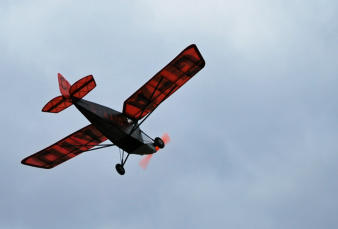

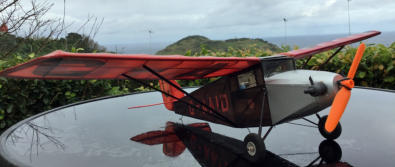
The ABC Robin was a single-seater light aircraft of 1929. She had a 40HP ABC
Scorpion two-cylinder air-cooled engine. The Robin was unusual for her time in
having an enclosed cabin.
The model is to one twelth scale and spans 25.3 in. (64 cm) and weighs 3.3 oz
(93.3 gm) ready to fly

Avro Avian
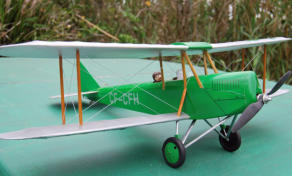
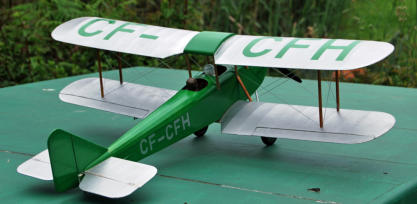
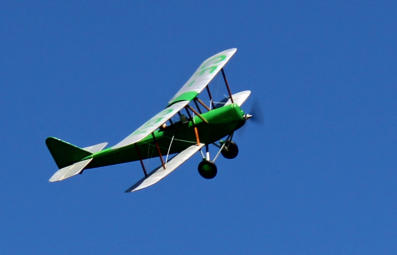

The Avro Avian was a popular light two-seater from the late 20’s and 1930’s—a
conemporary of the De Havilland Moth.
The model, to one twelth scale, is electric powered, spans 28” (71.1 cm) and weighs
10.4 oz (294 g) for take off
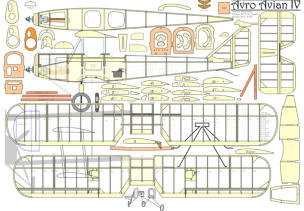
click plan to embiggen